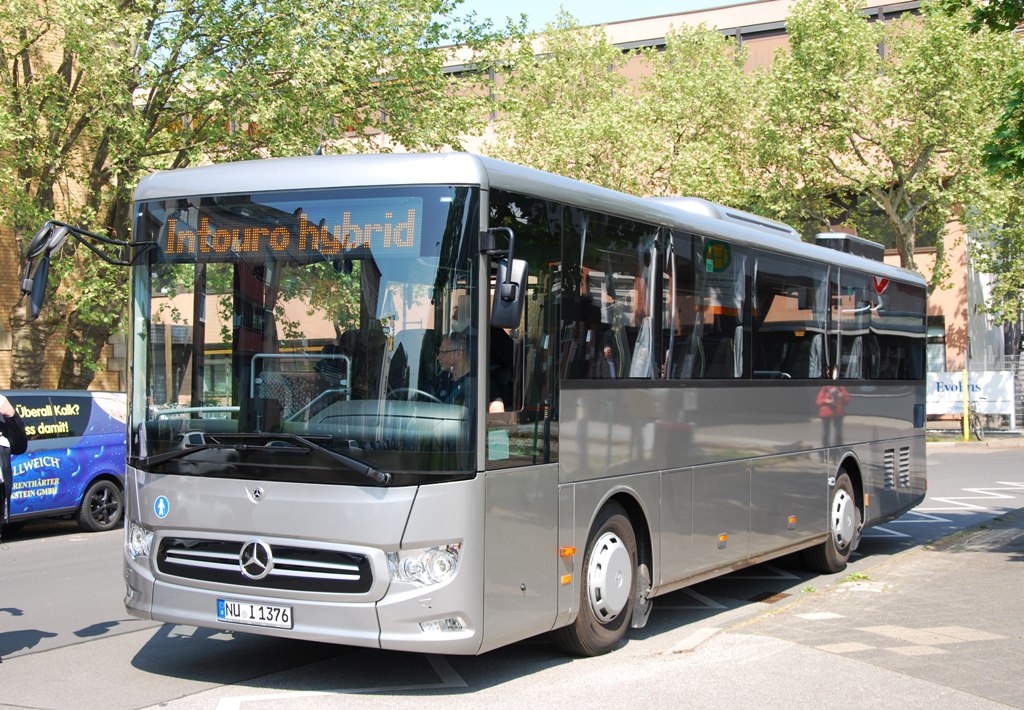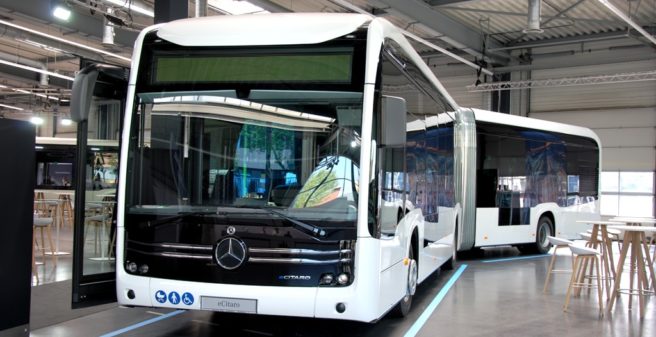
Daimler Truck, the commercial vehicle subsidiary of the Mercedes Group, invited to its bus plant in Mannheim on 2 May 2022. At the meeting, the company provided an insight into how the brand with the star plans to shape the future of its buses.
The top representatives of the Mercedes bus division were also able to welcome Federal Transport Minister Dr Volker Wissing and Elke Zimmer, the State Secretary in the Baden-Württemberg Ministry of Transport.
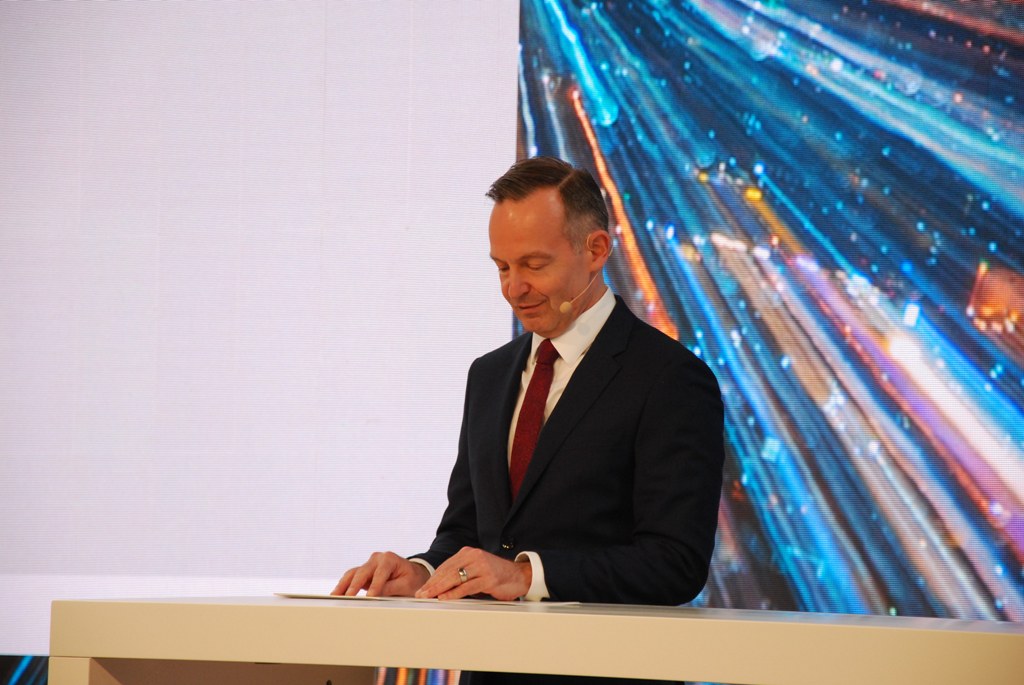
Statement by Federal Transport Minister Wissing
And so, in his speech at the beginning of the meeting, Federal Transport Minister Wissing promised the clear – above all financial – support of the federal government for the conversion of bus transport to modern, climate-friendly engines and drive systems. For example, the federal government would cover up to 80% of the additional costs that an electric bus would cost more than a diesel bus. In this context, a call for funding was launched, in which about 70 transport companies participated and which had a volume of 1.2 billion euros.
Wissing attached particular importance to the fuel cell, which allows the electric bus for a longer range.
The introduction of the 9-euro ticket in the months of June, July and August is being watched closely around the world. The goal is not only to reach again passenger numbers of pre-Corona levels, but also to increase them significantly. The bus should and will make its contribution, climate-friendly, environmentally neutral and even more attractive.
Statement Daimler Truck Chairman Daum
Martin Daum, Chairman of the Board of Management of Daimler Truck AG, said that the bus sets standards in the field of progressiveness. Daimler is striving for a comprehensive emission-free portfolio. In this context, he announced that Mercedes-Benz wants to offer commercial vehicles with hydrogen drive, too. For which a fuel cell plant is to be built in Weilheim.
Statement State Secretary Zimmer (Baden-Wuerttemberg)
State Secretary Zimmer from the Ministry of Transport in Baden-Württemberg mentioned climate protection as the starting point for all considerations on the transport of the future. A change in transport means first and foremost a change in propulsion, which she summed up in the words “away from the combustion engine”. In the state of Baden-Württemberg, she said, there are currently 130 climate-neutral buses: this number must increase significantly.
Mercedes bus electrification strategy
The electrification strategy of Mercedes Bus was explained by Till Oberwörder, Head of the Division Daimler Buses, and Mirko Sgodda, Head of Sales, Marketing & Customer Services. At the beginning of the presentation Oberwörder said that the introduction of the pollutant standard “Euro 7” for vehicles with combustion engines was imminent. And he stated unequivocally: “There will be no more city buses from Mercedes with Euro 7 engines.” With this, Mercedes joins the group of bus manufacturers such as Ebusco, Van Hool and VDL, which in future will rely exclusively on electric buses.
On Mercedes’ strategy in detail: At the end of 1997, Mercedes presented its new “Citaro” family of city buses. In the meantime, 60,000 vehicles of this series have left the factories.
The Mercedes-Benz eCitaro has been available to customers since 2018. In the meantime, it has earned first place in the sales statistics for electric buses in Germany – it took this position for the first time in 2021. In Europe, it is currently in 3rd place in the registration statistics. Oberwörder: “In the four years, we have gained a lot of experience with the eCitaro.” And: “Our switch to electric buses was successful. With the eCitaro, we didn’t want to be the first, we wanted to be the best.”
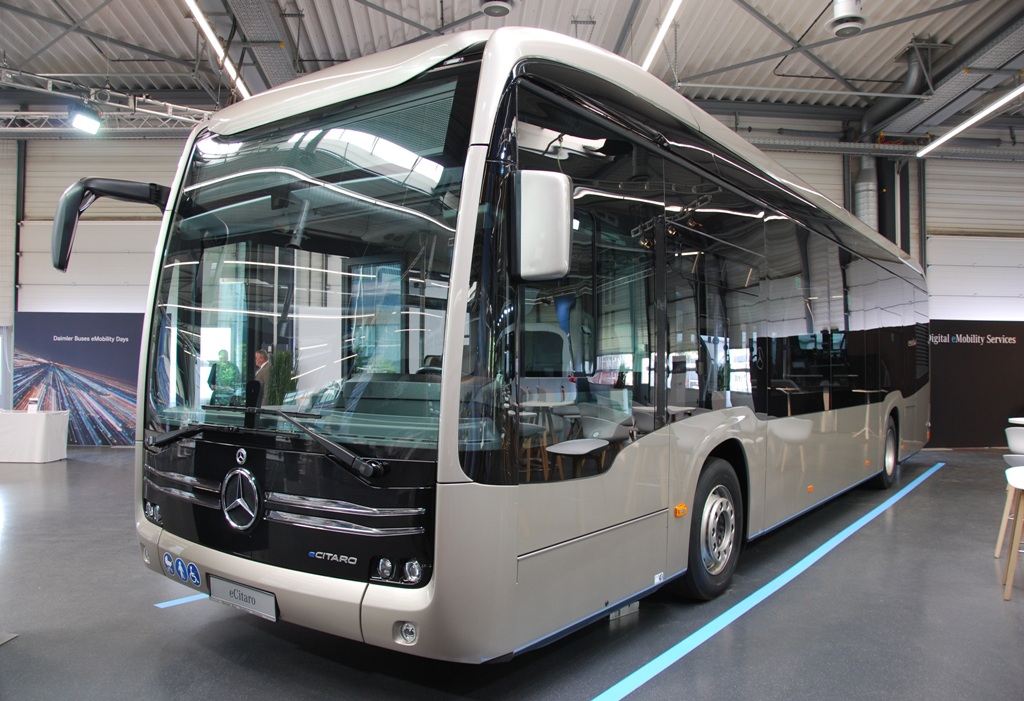
In 2020, the articulated version of the eCitaro followed. Since 2021, the eCitaro has also been available as a right-hand drive version, i.e. for countries with left-hand traffic. The short “eCitaro K” is to follow in 2024, the first electric intercity bus in 2025, and the first electric coach is planned for around 2030. Since it will not be able to return to its home depot night after night to recharge, the storage capacity of the batteries will still have to increase. An electric coach would still have a problem with its range.
For the future, Mercedes is focusing on a comprehensive emission-free portfolio. Motto: the electric bus: safe – comfortable – CO2-free. A dual strategy is to be pursued. Alternatively, the drive types electric (battery) and fuel cell (hydrogen) will be offered. Customers are deliberately offered two alternative drive options, which they can choose from according to the needs and possibilities of their operation.
By 2022, Mercedes will already be using the third battery generation in its buses. “Every two years there is a new battery generation, and each generation is significantly more powerful than its predecessor.” In the coming year 2023, there will also be the fuel cell as a “range extender” for battery buses. This means that the bus will primarily run on and off its battery. But when its range runs out, the fuel cell will switch on and continue to supply the traction current for the bus.
Mercedes defines its goal as follows: “We want to make the purchase and operation of electric buses economically attractive.” This also includes supplying electric mobility on a “turnkey” basis. This means advising a transport company on the conversion to electric buses, planning the conversion, planning the necessary facilities at the depot and having them built …
It was emphasised that the eCitaro harmonises with all charging systems. In other words, it can be used as a pure depot charger with recharging via CCS combo plug, but also with recharging on the line, and here again with both systems: with pantograph rising from the bus to the charging station, but also with “inverted” pantograph lowering from the charging station onto the bus.
On the third battery generation: Mercedes is increasingly relying on solid-state batteries. New are now NMC 3 batteries (NMC = Lithium – Nickel – Manganese – Cobalt – Oxide). They have the same weight as the previous batteries, but have a storage capacity of 588 kWh and thus achieve a range of 280 kilometres. In the eCitaro G, the storage capacity is significantly more than 600 kWh, which still gives it a range of 220 kilometres. – Incidentally, the solid batteries that Mercedes installs come from the French manufacturer Bolloré.
And because the current range of electric buses is not sufficient for a bus to leave the depot at 3.30 in the morning and return at 3.00 the next morning, Mercedes wants to deliver the eCitaro with a fuel cell as a range extender on request from 2023. The fuel cell will come from Toyota. It is ideal for mounting on the roof, and the bus can carry 5 kilograms of hydrogen in each tank (pressure bottle). The fuel cell requires less rare earths and metals, which could become problematic. The following principle characterises the current technical situation: the longer the distance and the heavier the load, the more the hydrogen fuel cell is the power source of first choice.
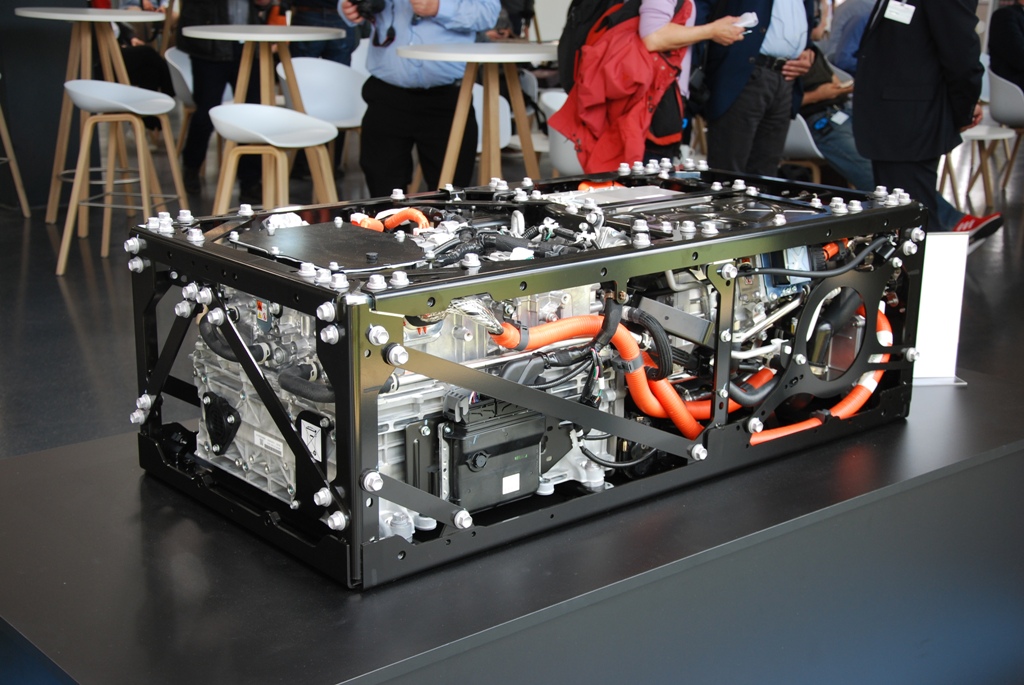
By the middle of this decade, Mercedes expects electric buses to account for about 35% of the total bus market. This would mean that more than every third bus would be an electric bus.
At the same time, Mercedes is working on increasing the recharging power of its electric buses to 450 kilowatts. A concluding statement: “We can replace the city buses with combustion engines used today 1:1 with buses with electric drives.”
Mercedes is also thinking about what will happen to the batteries when their storage capacity is no longer sufficient for use in buses. But they can then very well be used as stationary electricity storage for many years to come. The first such applications are already running with good success.
Mercedes basically rejected the bus, in which hydrogen is burnt in a normal combustion engine to generate the necessary energy for driving. Berlin’s BVG, for example, tested such a bus in the 1980s, and recently the question arose whether buses could not be operated in this way. Mercedes justifies its negative attitude: it will take at least ten years until this technology is really ready for series production, and a hydrogen burner is not completely emission-free.
The “Intouro K hybrid“
On the sidelines of the event, Mercedes took the opportunity to present its new high-floor intercity bus “Intouro K hybrid”. It is 10,745 mm long and is built at the Turkish Mercedes plant in Hosdere near Istanbul. Its hybrid drive is the same one that works in the Citaro Hybrid, and it helps the bus to lower diesel consumption by generating part of its drive power with electricity recuperated during braking. For the recuperated electricity, there are three supercap storage units on the roof, each with a storage capacity of 45 kWh (i.e. a relatively small storage capacity). The hybrid Intouro has no automatic start-stop system. The bus can have a maximum of 45 seats, and the centre door can be either single or double wide.
